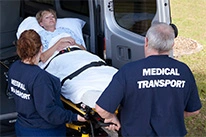
We offer the very best medical transportation service for non-emergency medical transport. We have an excellent team of drivers, medical staff and transportation specialists. They provide the most distinguished, yet cost effective, bedside-to-bedside transportation service available. We take care of everything.
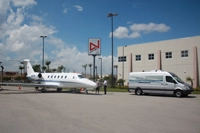
Our medical transportation fleet is second to none. We operate state-of-the-art Mercedes Benz Sprinter transporters. These vehicles have been specially configured to function as a hospital room on wheels. Our large, nationwide fleet is expertly maintained to provide the ultimate in luxury and comfort.

ACC Medlink specializes in long distance medical transport services and state to state medical transport services. We utilize DOT-approved vehicles that are the largest in the industry. They’re all equipped with three beds to accommodate family when loved ones are traveling together long distances.
When a patient is in non-critical condition and cannot or will not fly, long distance ground transport is a cost-saving alternative to air ambulance travel. It is also the most ideal way to transport a patient over distances of 200+ miles. During these types of transports the patient is accompanied by a medical professional at all times. When considering medical ground transport, use these long distance ground transport tips to help you make a decision.
ACC Medlink is the premier nationwide medical transportation company. We offer state to state patient transport for non emergency situations. Unlike typical ambulance transportation service, ACC Medlink’s long distance medical transport vehicles are specially configured for comfort. Patients who can not walk or sit up for extended periods, will find extreme comfort in our services. If your destination is more than 200 miles away—we are the safest and most cost effective choice available.
Our long distance medical vans are fully equipped to meet needs and ensure the most comfortable ride. Whether restricted to a bed or able to sit up, our staff will make the necessary accommodations. We can even accommodate several family members or a pet to feel comfortable every step of the way. Our Mercedes Sprinter fleet are the only DOT approved vehicles in the entire industry for this type of transport.
Read More
If you need nationwide elderly transportation or state to state ambulance service, you can trust our qualified staff to handle the patient with the utmost in care. We offer an experienced team of medical professionals and transportation specialists who work together to provide the most comfortable experience. We have an excellent track record for safely transporting our patients over long distances.
All it takes is one call and everything will be taken care of. Our transport coordinators are standing by 24/7 waiting to assist you with your long distance medical transport needs. You can rest assured that your loved one is receiving the top level of care. If you have any questions, give us a call at 1-800-550-1025.
We provide the best mix of comfort and luxury for patients with safety and peace of mind for the family. ACC Medlink makes finding the perfect medical transport option a great experience for everyone.
Our Mercedes Sprinter is built to allow the patient maximum comfort. Our state of art designs make our long distance patient transport ambulance service the industry leader. Our Sprinter is the best combination of luxury and value for patients traveling with additional family, large medical equipment, or pets. Our service is very accommodating. We will take care of any special needs. Inform one of our transport coordinators while booking the trip and they will be happy to assist you!
The price of your luxury transport can be reflected by current market conditions and the level of medical care required by the patient. The grandeur of the services provided to you allows our crew to cater to your wants and needs.
There are certain circumstances where a patient or a loved one may need to be relocated from state to state, but cannot ride in a regular vehicle because of the medical attention they require during transport. That is where long distance medical transport providers such as ACC Medlink come in. Our fully equipped, spacious medical fleet of Mercedes Benz Sprinters is the number one choice for medical transports over long distances.
There are many advantages to long distance medical transport but one of the biggest is safety. During these types of transports there is a trained medical professional at the patient's side at all times ready and willing to help with all needs.
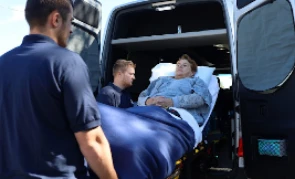
When choosing a medical transport service provider, you must ensure to choose one that not only focuses on getting you to your destination, but also prioritizes using the safest, most conducive, and most efficient sets of vehicle fleets and equipment to do the job.
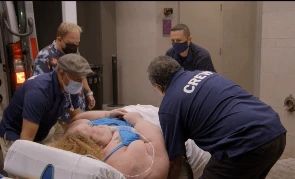
ACC Medlink appeared on the TLC television network reality show “1000 LB Sisters” to transport one of the cast members from Ohio to a doctor in Kentucky. Filmed in late 2022, ACC Medlink, four of its employees and the journey they took with Tammy Slaton were featured in episode 6 of season 4, which originally aired on February 21, 2023.
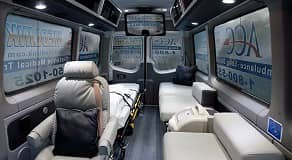
ACC Medlink is proud to announce the addition of a new line of elite medical sprinter vans to our long distance medical transport fleet. This addition will allow ACC Medlink to continue to provide superior service and outstanding care for those in need of medical transport out of state...
